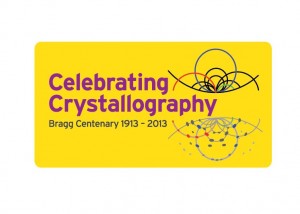| Description |
 Approximately 100 years ago in Germany Max Theodor Felix von Laue (1879-1960), Paul Karl Moritz Knipping (1883-1935) and Walter Friedrich (1883–1968) showed Approximately 100 years ago in Germany Max Theodor Felix von Laue (1879-1960), Paul Karl Moritz Knipping (1883-1935) and Walter Friedrich (1883–1968) showed that X-rays could be diffracted by crystals. Laue was subsequently awarded the Nobel Prize in Physics in 1914. Following this discovery, the unique partnership, father and son, William Henry Bragg (1862-1942) and William Lawrence Bragg (1890-1971) in England, successfully showed how x-ray diffraction could lend itself to the solution of crystal structures, for which they shared the Nobel Prize in Physics in 1915. A major exhibition is planned to coincide with the ECM28 at the University of Warwick to celebrate their lives: for the first time it will be possible to view historic equipment, notebooks, honours, letters, films and artwork. The exhibition will be open to all participants and to the public at large. that X-rays could be diffracted by crystals. Laue was subsequently awarded the Nobel Prize in Physics in 1914. Following this discovery, the unique partnership, father and son, William Henry Bragg (1862-1942) and William Lawrence Bragg (1890-1971) in England, successfully showed how x-ray diffraction could lend itself to the solution of crystal structures, for which they shared the Nobel Prize in Physics in 1915. A major exhibition is planned to coincide with the ECM28 at the University of Warwick to celebrate their lives: for the first time it will be possible to view historic equipment, notebooks, honours, letters, films and artwork. The exhibition will be open to all participants and to the public at large.
The Two Braggs exhibition runs alongside ECM28 until the 29th, with a public Discovery Day on the 30th.
The catalogue of the exhibition is available.
|



